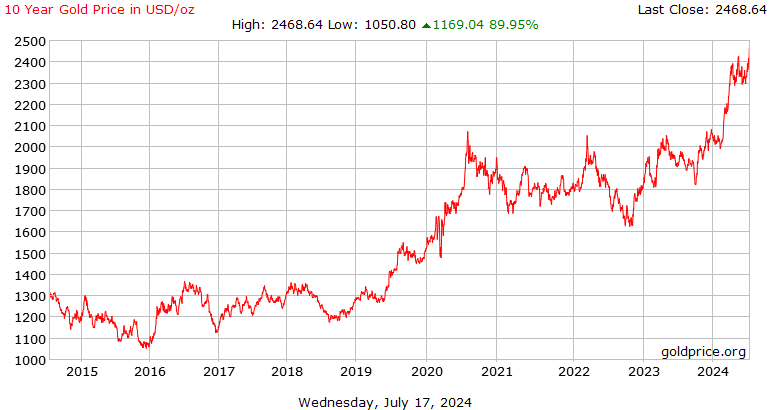
For centuries, gold has captivated humanity with its lustrous allure and enduring value. From ancient civilisations to modern economies, this precious metal has retained its status as a symbol of wealth and stability. Today, gold isn’t just for kings and central banks – it’s an accessible and potentially lucrative market for traders like you.
In this guide, we’ll unlock the secrets of gold trading, exploring its unique role in the financial world and providing you with practical strategies to navigate this market. Whether you’re looking to diversify your portfolio, hedge against economic uncertainty, or simply try your hand at a fascinating form of trading, this article will equip you with the knowledge you need to get started.

Gold’s journey from ancient currency to modern financial powerhouse is a testament to its enduring appeal. Throughout history, gold has served as a reliable store of value, often shining brightest during times of economic turmoil. Today, it continues to play a crucial role in global finance, offering unique benefits to traders and investors alike.
One of gold’s most attractive features is its ability to hedge against inflation. As the purchasing power of paper currencies erodes over time, gold often retains its value, making it a popular choice for those looking to protect their wealth from the ravages of rising prices.
Gold also acts as a safe haven asset during periods of economic or geopolitical uncertainty. When stock markets tumble or geopolitical tensions rise, investors often flock to gold, driving up its price and potentially providing profits for savvy traders.
For portfolio managers and individual investors alike, gold offers valuable diversification benefits. Its price movements often have a low or negative correlation with other asset classes like stocks and bonds, potentially reducing overall portfolio risk.

The good news for aspiring gold traders is that you don’t need a vault to get started. There are several ways to gain exposure to gold prices:
1. Physical gold: This includes coins, bars, and jewellery. While owning tangible gold can be satisfying, it comes with storage and security concerns.
2. Gold ETFs: Exchange-traded funds offer an easy way to track gold prices without the hassle of physical ownership. They’re traded like stocks and typically have lower fees than many other gold investments.
3. Gold stocks: Investing in gold mining companies can provide indirect exposure to gold prices. However, these stocks are also influenced by company-specific factors and broader market trends.
4. Gold futures and options: These derivative products are typically used by more experienced traders due to their complexity and higher risk profile.

To trade gold effectively, you need to understand what drives its price. Several key factors come into play:
1. Interest rates: When interest rates are low, the opportunity cost of holding non-yielding gold decreases, often boosting its price.
2. Inflation: Rising inflation often drives investors towards gold as a store of value.
3. Economic growth: Slow growth or recessions can increase gold’s appeal as a safe haven.
4. Geopolitical events: International conflicts or political instability can spark a flight to safety, benefiting gold.
5. Supply and demand: Changes in gold production or consumption can impact prices, though usually to a lesser extent than the above factors.
For advanced traders, technical analysis can provide insights into short-term price movements. Concepts like trend lines, support and resistance levels, and moving averages can help identify potential entry and exit points for trades.

As a non-professional trader, it’s best to start with straightforward strategies:
1. Buy-and-hold: This long-term approach involves purchasing gold and holding it for an extended period. It’s simple and can be effective, but may not capitalise on short-term price movements. Ideal for patient investors with a long-term outlook.
2. Swing trading: This strategy aims to capture medium-term trends in gold prices. Traders might hold positions for days or weeks, trying to profit from price swings. It requires more active market monitoring and basic technical analysis skills.
3. Dollar-cost averaging (DCA): With this approach, you invest a fixed amount in gold at regular intervals, regardless of price. This can help smooth out the impact of price volatility over time. It’s great for risk-averse investors or those with regular income to invest.
4. Value investing: This involves buying gold when you believe it’s undervalued, with the expectation that its price will eventually rise to its “true” value. It requires patience and some skill in fundamental analysis to determine when gold might be undervalued.
Each strategy has its own risk-reward profile, so choose one that aligns with your goals, available time, and risk tolerance. Consider starting with a demo account to practice before risking real money.

1. Do your homework: Stay informed about economic indicators, geopolitical events, and gold market analysis from reputable sources.
2. Learn basic technical analysis: Understanding how to read price charts and interpret simple indicators can enhance your trading decisions.
3. Practice risk management: Always use stop-loss orders to limit potential losses, and never risk more than you can afford to lose on a single trade.
4. Master your emotions: Fear and greed can lead to poor decisions. Develop a trading plan and stick to it, regardless of short-term market movements.
5. Start small: Begin with a small amount of capital as you learn the ropes of gold trading.
In conclusion, gold trading offers a unique opportunity for traders. By understanding gold’s role in the economy, learning basic strategies, and avoiding common pitfalls, you can embark on this exciting journey.
For beginners, platforms like VT Markets provide an excellent starting point. With user-friendly tools, educational resources, and gold CFD trading options, it’s ideal for newcomers. The demo account feature allows you to practice risk-free before committing real funds. Remember, successful trading develops over time. Start small, keep learning, and utilise demo accounts to hone your skills. With persistence, gold trading could become a valuable addition to your financial toolkit.